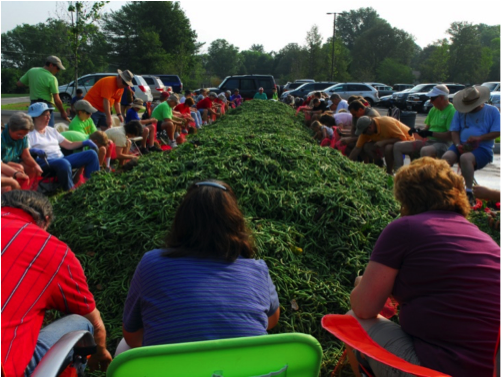What Is Food Recovery?
 Food recovery – the practice of preventing surplus foodstuffs from being dumped in
the trash – takes numerous forms and provides a variety of social, economic, and environmental
benefits. The highest and best form of food recovery involves collecting wholesome
but unused or unsalable food for distribution to those in need. It is also possible
to reduce waste and decrease resource burden by collecting excess food for use in
animal feed, composting, and biofuel production.
Food recovery – the practice of preventing surplus foodstuffs from being dumped in
the trash – takes numerous forms and provides a variety of social, economic, and environmental
benefits. The highest and best form of food recovery involves collecting wholesome
but unused or unsalable food for distribution to those in need. It is also possible
to reduce waste and decrease resource burden by collecting excess food for use in
animal feed, composting, and biofuel production.
Why should my business engage in food recovery?
Engaging in food recovery is a straightforward and uplifting way to respond to a variety of difficult problems. Plus, by reducing disposal costs, improving worksite sanitation, and providing a way to access valuable tax credits, food recovery can provide direct and substantial benefits for participating enterprises. By implementing recovery programs, food-sector businesses can reduce the amount of material that enters into the waste stream, provide nutritious meals for hungry people in their communities, and minimize the environmental burdens associated with agricultural production, food disposal, and waste. Food recovery also serves as an uncontroversial way to be a socially responsible business, make your company more green and sustainable and garner good will among your community and with potential customers.
Is it illegal to give away food that I would not or cannot sell to my customers?
 Not at all. There is no law that prevents the donation of excess food for appropriate
purposes, including feeding the hungry, feeding animals, biofuel production, and composting.
To encourage those with excess but edible food to donate to organizations that feed
the hungry, there are robust statutory protections for good faith donors of apparently
wholesome food and apparently fit grocery products. These laws eliminate the risk
of liability for negligence claims associated with food donation. For more information
on the legal aspects of food donations, see Food Recovery & the Law.
Not at all. There is no law that prevents the donation of excess food for appropriate
purposes, including feeding the hungry, feeding animals, biofuel production, and composting.
To encourage those with excess but edible food to donate to organizations that feed
the hungry, there are robust statutory protections for good faith donors of apparently
wholesome food and apparently fit grocery products. These laws eliminate the risk
of liability for negligence claims associated with food donation. For more information
on the legal aspects of food donations, see Food Recovery & the Law.
What is a Food Recovery Plan?
A food recovery plan is a roadmap for an organization’s food recovery and donation efforts. Food recovery plans can take many forms. Developing a food recovery plan will help an organization conceive of and troubleshoot its food recovery activities. Food recovery plans should identify and address the following:
- Characteristics of suitable food distribution organizations;
- Proposed terms of the relationship between the food business and the food distribution organization(s);
- ypes of food to be donated;
- Protocol for and means of transportation for donated food and grocery items;
- Qualifications of the persons in charge of overseeing donation at both the donating and receiving facilities;
- Training provided to staff regarding food safety, hygiene, defense, storage, and transportation;
- Preferred timing and frequency of donations;
- ommunication protocols as between the donor and recipient organizations;
- Method for addressing unsatisfactory interactions, improperly donated food or other items; and
- Record keeping policies.
Comprehensive Guidelines for Food Recovery Programs were collaboratively developed in 1997 by the United States Department of Agriculture and the Food and Drug Administration and updated in 2007. This document may be useful to organizations seeking to develop a food recovery plan. For other resources, see Resources & News.